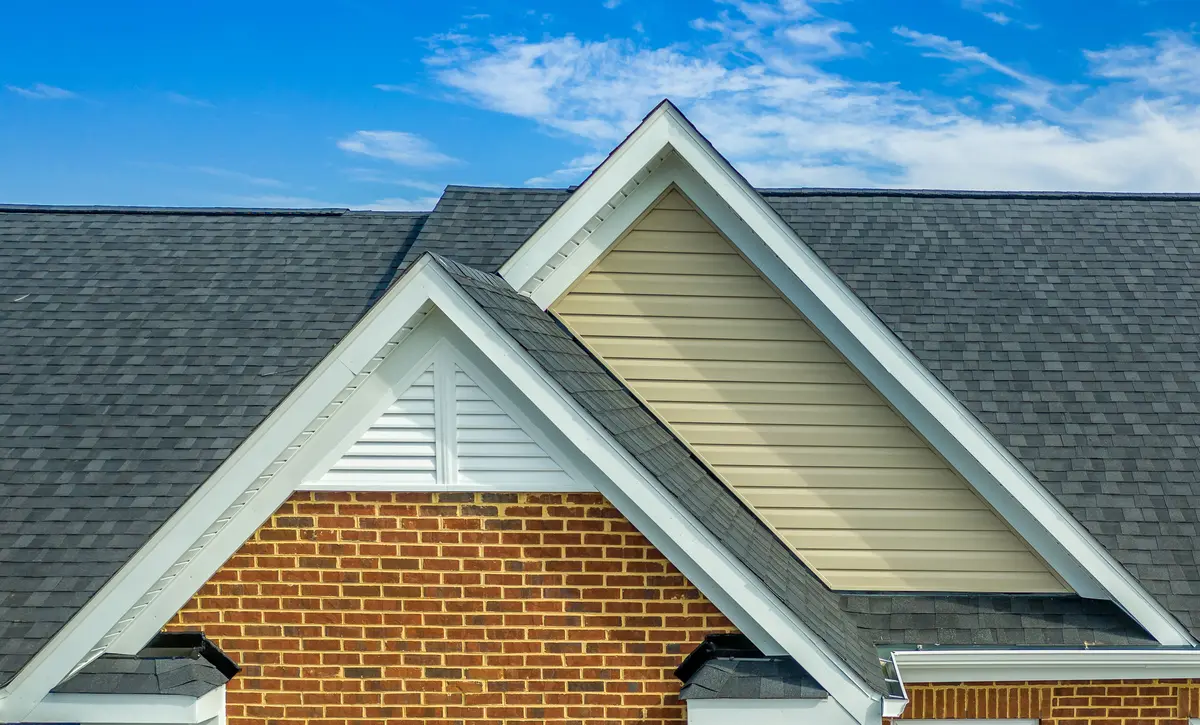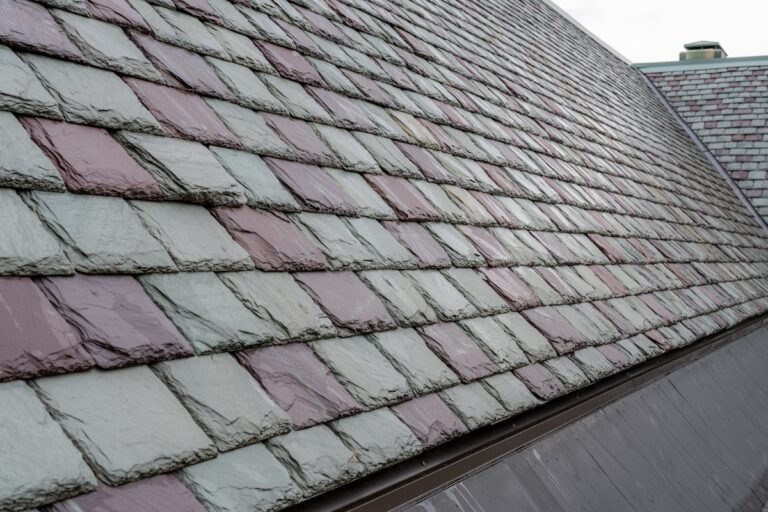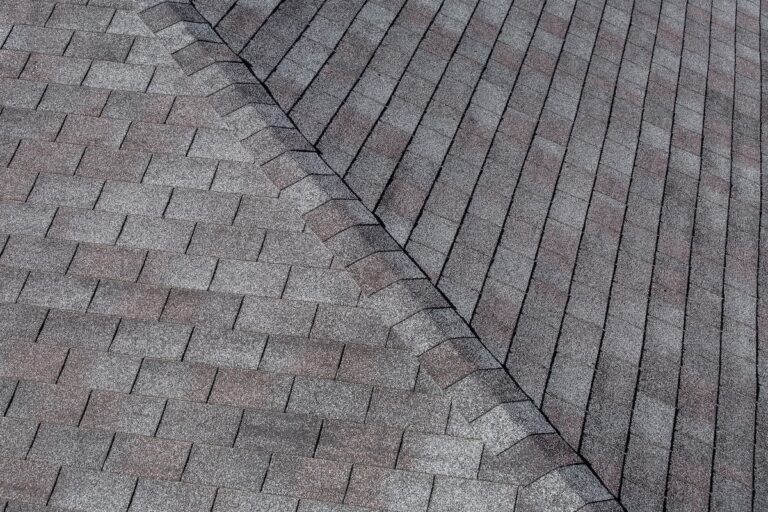Homeownership is a rewarding yet challenging experience. There are countless elements that contribute to the structural integrity and aesthetic appeal of your home. Among these, soffit and fascia might not be the most glamorous, but they play an essential role. These components are integral to the overall health of your home’s exterior, and understanding them can save you:
- Time
- Money
- Headaches
But, we get it. You’re not a roofing contractor. So, if you find yourself wondering “what is soffit and fascia?” you aren’t alone.
In this comprehensive guide, we will explore what soffit and fascia are, why they are important, and how to maintain them effectively.
A Basic Introduction to Soffit and Fascia
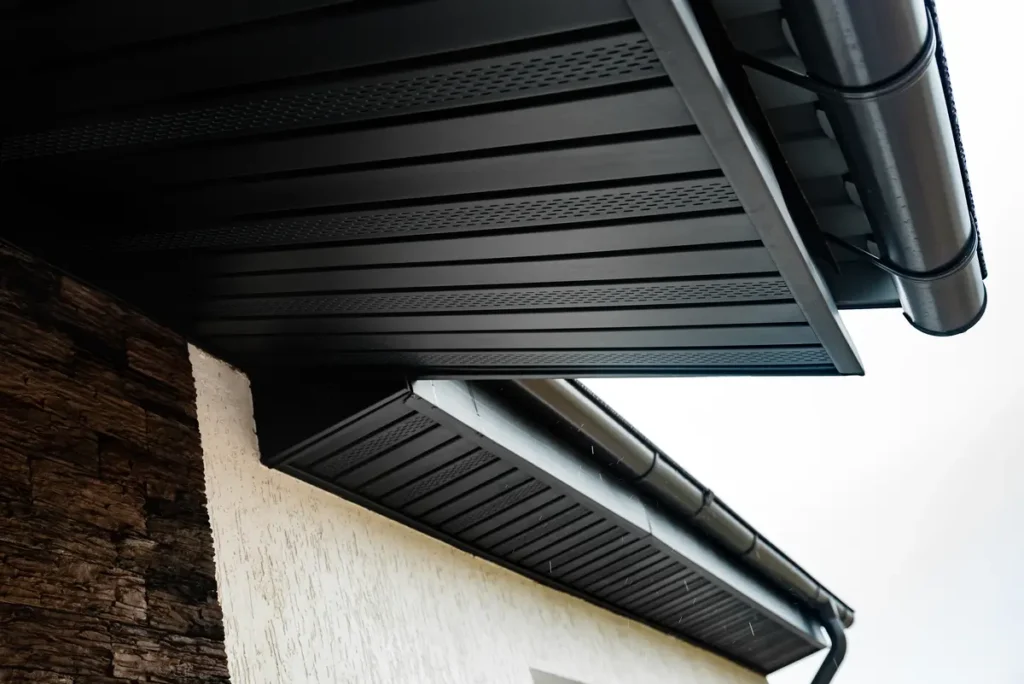
Before we dive into the specifics, it’s important to start with the basics.
What is a Soffit?
The term “soffit” comes from the French word “soffite,” which means “something fixed underneath.” In architectural terms, the soffit refers to the material that forms a ceiling from the top of an exterior house wall to the outer edge of the roof. Essentially, it is the underbelly of the eaves.
🔑 Key Functions of a Soffit Include:
- Ventilation: One of the primary functions of soffit is to facilitate airflow into your attic. Proper ventilation helps regulate temperature and moisture levels, preventing mold growth and extending the life of your roof.
- Protection: The soffit protects the underside of your roof structure from various elements, including rain, wind, and pests.
- Aesthetics: It also provides a smooth, finished look to the underside of your eaves, enhancing curb appeal.
Soffits can be made from various materials, including vinyl, aluminum, wood, and fiber cement. Each material has its own set of advantages and disadvantages, which we’ll discuss in detail later.
What is Fascia?
Fascia, on the other hand, refers to the vertical band or board that runs along the edge of the roof. It is mounted on the exposed ends of rafters or the top of the exterior walls, closing the gap between the roof and the wall.
🔑 Key Functions of Fascia Include:
- Support for Gutters: Fascia boards provide the necessary support for your gutter system. Without a sturdy fascia, gutters could sag or detach, leading to water damage.
- Protection: Like soffit, fascia helps protect the roof and interior of the home from weather elements, including water infiltration.
- Aesthetics: It creates a clean, finished edge on the roofline, contributing to the home’s overall appearance.
Similar to soffit, fascia can be made from various materials such as wood, vinyl, aluminum, and composite materials.
Importance of Soffit and Fascia
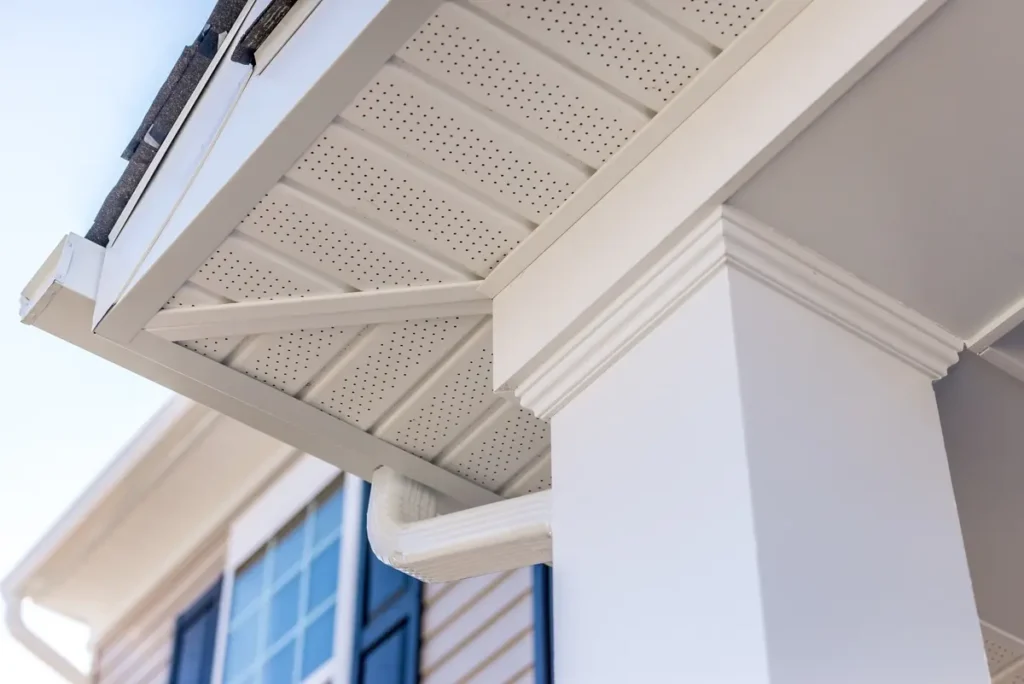
Now that we know what soffit and fascia are, let’s discuss why they matter.
Structural Integrity
Both soffit and fascia play crucial roles in maintaining the structural integrity of your home. The soffit ensures proper ventilation, which prevents moisture build-up in the attic. Excess moisture can lead to mold, mildew, and wood rot, compromising the structural stability of your home.
The fascia, by supporting the gutter system, ensures that rainwater is effectively channeled away from your home. This prevents water damage to the roof, walls, and foundation.
Energy Efficiency
Properly ventilated attics are essential for energy efficiency. In the summer, good ventilation helps expel hot air, reducing the load on your air conditioning system. In the winter, it prevents moisture build-up, which can lead to ice dams—a condition where ice accumulates at the edge of the roof, preventing melting snow from draining off.
Aesthetic Appeal
A well-maintained soffit and fascia contribute significantly to the exterior appearance of your home. They provide a seamless look, hiding unsightly rafters and giving your roofline a polished finish.
4 Different Materials for Soffit and Fascia to Know
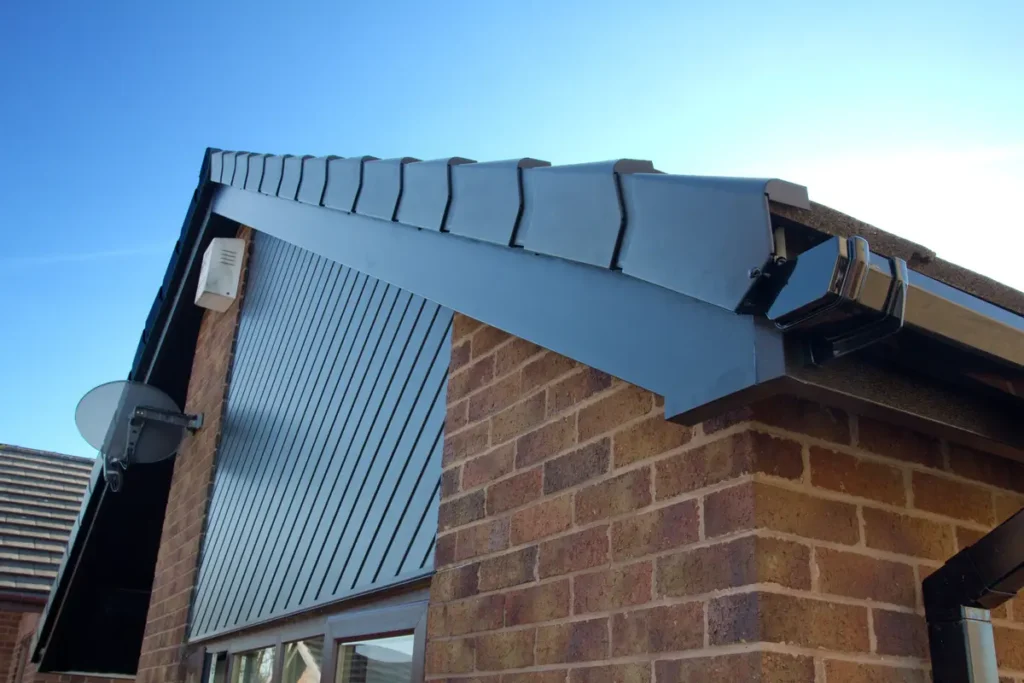
Choosing the right material for soffit and fascia is crucial for their functionality and durability. Here’s a breakdown of the most common materials used:
1) Vinyl
Vinyl is a popular choice for soffit and fascia because it is relatively inexpensive, low-maintenance, and resistant to rot, warping, and insects. Its durability and availability in a variety of colors make it an attractive option for homeowners looking to enhance their home’s aesthetic appeal while ensuring long-lasting protection.
✅ Benefits:
- Durability: Vinyl is resistant to rot, pests, and moisture.
- Low Maintenance: It requires minimal maintenance—usually just a wash with soapy water.
- Cost-Effective: Generally, vinyl is more affordable compared to other materials.
❌ Drawbacks:
- Aesthetic Limitation: Vinyl may not offer the same aesthetic appeal as wood or aluminum.
- Temperature Sensitivity: It can become brittle in extremely cold temperatures.
2) Aluminum
Aluminum is favored for its lightweight nature, durability, and resistance to corrosion, making it an excellent choice for soffit and fascia in regions prone to harsh weather.
✅ Benefits:
- Durability: Aluminum is resistant to rust and corrosion.
- Lightweight: Easy to handle and install.
- Customizable: Available in various colors and styles.
❌ Drawbacks:
- Cost: More expensive than vinyl.
- Denting: Prone to denting or bending under impact.
3) Wood
Wood offers a classic and natural appearance, making it a popular choice for traditional homes. It can be painted or stained to match the aesthetic of your home, providing a versatile option for customization. However, wood requires regular maintenance to prevent issues such as rot and insect damage, and its natural properties mean it is more susceptible to environmental wear over time.
✅ Benefits:
- Aesthetic Appeal: Offers a natural, classic look.
- Customizable: Can be painted or stained to match the home’s exterior.
❌ Drawbacks:
- Maintenance: Requires regular painting or staining to prevent rot and pest infestation.
- Cost: Can be more expensive upfront and in long-term maintenance.
4) Fiber Cement
Fiber cement is a highly durable and versatile material made from a mixture of cement, sand, and cellulose fibers. It is praised for its exceptional resistance to fire, rot, and pests, making it a reliable choice for soffit and fascia applications. Additionally, fiber cement can be manufactured to mimic the appearance of wood or stone, providing considerable aesthetic flexibility while maintaining its robust properties. Despite these benefits, fiber cement can be more expensive and heavier than other materials, potentially complicating the installation process.
✅ Benefits:
- Durability: Resistant to rot, fire, and pests.
- Low Maintenance: Requires less maintenance compared to wood.
❌ Drawbacks:
- Cost: More expensive than vinyl and aluminum.
- Installation: Heavier and more difficult to install.
How to Maintain Soffit and Fascia
Proper maintenance is key to prolonging the life of your soffit and fascia. Here are some tips:
Regular Inspections
Conduct regular inspections to check for any signs of damage, such as cracks, peeling paint, or sagging. Early detection of problems can prevent more extensive and costly repairs.
Cleaning
Keep the soffit and fascia clean by removing debris, dirt, and cobwebs. For vinyl and aluminum, a simple wash with soapy water and a soft brush is usually sufficient. Wood requires more careful cleaning to avoid damaging the paint or stain.
Painting and Sealing
For wood soffit and fascia, regular painting or staining is necessary to protect against moisture and pests. Make sure to use high-quality exterior-grade paint or sealant.
Gutter Maintenance
Since the fascia supports the gutters, it’s essential to keep the gutters clean and in good repair. Clogged or damaged gutters can lead to water overflow, which can harm both the fascia and soffit.
Ventilation Check
Ensure that the soffit vents are not blocked and that air can flow freely into the attic. Proper ventilation is crucial for preventing moisture build-up.
Signs of Damage and When to Replace
Even with the best maintenance practices, soffit and fascia can suffer wear and tear over time. Here are some signs that it might be time to replace them:
- Peeling Paint or Rust: Peeling paint on wood fascia or rust on metal fascia indicates that the material is no longer adequately protected from the elements. This can lead to more severe damage if not addressed promptly.
- Cracks or Gaps: Cracks or gaps in the soffit or fascia can allow water and pests to enter, leading to further structural damage.
- Sagging or Warping: Sagging or warping of the fascia can indicate water damage or structural issues. This can compromise the effectiveness of your gutter system and should be addressed immediately.
- Mold or Mildew: The presence of mold or mildew on the soffit can indicate poor ventilation and excess moisture. This not only affects the structural integrity but also poses health risks.
DIY vs. Professional Replacement
When it comes to replacing soffit and fascia, homeowners have the option of doing it themselves or hiring a professional. Here’s what to consider:
DIY Replacement
👍 Pros:
- Cost Savings: Doing it yourself can save on labor costs.
- Control: You have complete control over the project and materials used.
👎 Cons:
- Skill Level: Requires a certain level of skill and knowledge.
- Time-Consuming: Can be time-consuming, especially for larger homes.
Professional Replacement
👍 Pros:
- Expertise: Professionals have the experience and tools needed to do the job correctly.
- Efficiency: The job can be completed faster and with less hassle.
- Warranty: Many professionals offer a warranty on their work, providing peace of mind.
👎 Cons:
- Cost: More expensive due to labor costs.
Support For Your Soffit and Fascia Board
Understanding soffit and fascia is crucial for maintaining the structural integrity, energy efficiency, and aesthetic appeal of your home. By choosing the right materials, conducting regular maintenance, and knowing when to replace these components, you can ensure that your home remains in top condition.
If you’re unsure about the state of your soffit and fascia or need professional advice, don’t hesitate to contact a trusted contractor at Johnson Restoration. After all, investing in these often-overlooked components can save you significant money and stress in the long run.Interested in learning more about home maintenance tips? Reach out for all the information you need for your roof overhang and more!
